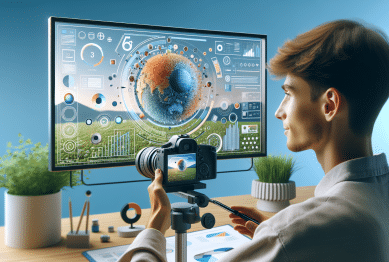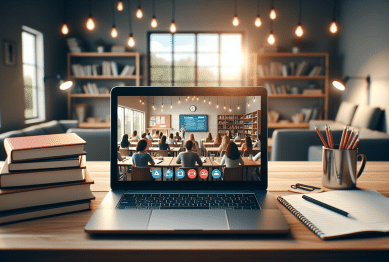In an age where every scroll offers a new insight, every podcast promises wisdom, and every book summary feels like a shortcut to mastery, learning has become less about depth and more about accumulation. We’re flooded with content. But is more always better?
The answer, increasingly, is no. Learning without overconsuming is becoming an essential skill—especially for professionals, creators, and lifelong learners who want to stay sharp without burning out.
This article explores how to build meaningful knowledge while resisting the trap of passive overload. We’ll break down practical methods, highlight emerging trends, and offer research-backed tips to help you focus, absorb, and actually use what you learn.

The Problem: Information Glut, Cognitive Drain
The modern learner is overloaded. We consume:
- Dozens of newsletters
- 3–4 hours of social feeds daily.
- Countless tabs and bookmarks we never revisit
- Educational content we skim but don’t retain
According to cognitive psychologist John Sweller, working memory has limited capacity, and too much input without processing causes cognitive overload, reducing actual learning.
In short: Input without integration leads to forgetting, not fluency.
The Solution: Intentional Learning with Input Boundaries
The key isn’t to stop learning—it’s to learn with intention. To shift from accumulation to absorption, consider the following framework.
Step 1: Set Purposeful Limits on Input
Before adding more articles, videos, or newsletters to your queue, ask:
“What am I trying to learn—and why?”
This creates a filter that reduces noise. Try:
- The One-Topic Rule: Choose one learning goal per week (e.g., “How to run better meetings”) and ignore unrelated materials.
- The 3–2–1 Rule: For each day or week, limit yourself to:
- 3 articles
- 2 podcasts
- 1 video/longform piece
This technique mirrors the “slow content” trend, similar to the slow food movement—fewer, better choices, consumed more mindfully.
Step 2: Capture Before You Forget
It’s not enough to consume—you need to externalize.
The brain forgets quickly. According to the Ebbinghaus Forgetting Curve, people forget about 50% of new information within an hour, and up to 90% within a week if no action is taken.
Counter this with capture systems like:
- A daily learning log (tools like Obsidian, Notion, or Roam help here)
- A dedicated “second brain” (Tiago Forte’s methodology, 2022)
- A physical notebook, organized by topic or theme
Don’t just copy. Write what you understood, not just what was said. Personal interpretation drives retention.
Step 3: Edit and Transform What You Captured
Once something’s saved, it must be reshaped. Passive notes won’t help you unless they’re turned into something active.
Try These Techniques:
- Summarize in your own words (like you’re explaining to a beginner)
- Tag and connect notes to existing concepts in your system
- Highlight contradictions or unclear points—then revisit the source or research more
This editing process is known in learning science as elaboration—a method that deepens memory through reinterpretation.
Step 4: Add Structure and Context
Raw notes are just data. For knowledge to take shape, structure is essential.
You might:
- Organize insights into frameworks or mind maps
- Create categories like “Concepts,” “Quotes,” “Applications”
- Build timelines for learning complex systems (e.g., AI history)
Adding context makes ideas easier to retrieve and apply. It also helps you spot patterns that surface over time—what researchers call schema formation, or mental organization of knowledge.
Step 5: Apply What You Learn Through Mini-Outputs
Want to remember more? Use it.
Create small, visible outputs from what you’ve learned:
- A short blog post
- A Loom explainer for your team
- A simple tutorial or checklist
The act of turning input into output solidifies understanding. This aligns with the generation effect, a phenomenon where information is better retained when produced from memory rather than passively reviewed.
Step 6: Review, Reflect, and Refine
The final step? Pause and revisit.
Build a habit of weekly review:
- What did you actually retain?
- What proved useful?
- What do you want to go deeper into?
This builds a feedback loop that helps filter future inputs. It also encourages meta-learning—learning about how you learn, which improves efficiency over time.
Emerging Trend: “Just-in-Time” Learning
A major shift is happening toward contextual, just-in-time learning, where information is accessed precisely when it’s needed.
Instead of stockpiling knowledge “just in case,” many professionals now rely on:
- Curated AI tools (e.g., Perplexity, ChatGPT)
- Real-time documentation systems (like Notion AI + Slack integration)
- Bookmark folders organized by project—not topic
This mirrors how software developers search Stack Overflow for immediate answers rather than memorizing syntax.
In other words, the modern learner is becoming more like an engineer: focused, situational, and strategic.
Common Pitfalls (and How to Avoid Them)
Even with the right mindset, traps remain. Here’s what to watch for:
- The Collector’s Fallacy: Thinking saving something equals learning it. Don’t just bookmark—engage.
- Multi-tasked Learning: Consuming while scrolling, replying, or watching TV. Try single-tasked learning sessions instead.
- Obsessive Curation: Spending hours organizing without reviewing or applying. Simplicity helps: use low-maintenance systems.
Tools to Support Lean Learning
If you’re looking to adopt this model, a few tools can help streamline the process:
- Readwise Reader: Highlight, tag, and resurface saved content automatically.
- Tana or Notion: Excellent for building personal knowledge bases.
- Snipd (for podcasts): Converts voice to smart notes with transcripts.
- Daily Notes Apps: Craft, Logseq, or even Apple Notes for low-friction journaling.
Conclusion
In today’s content-heavy world, learning isn’t about hoarding—it’s about what you actually use.
When you filter more intentionally, capture with purpose, and transform your inputs into small outputs, you not only reduce overwhelm—you retain more, apply faster, and build cumulative wisdom.
This new style of learning values clarity over volume, context over noise, and progress over perfection. As digital overload becomes the norm, strategic learners will gain an edge not by consuming more—but by remembering more of what matters.
References
- Dunlosky, J. et al. (2021). A Meta-Analysis of Ten Learning Techniques. Frontiers in Education. Learning CenterFrontiers
- Times of India. “8 Proven Study Techniques That Work.” The Times of India+2Edutopia+2The Times of India+2
- Teen Vogue. “Pretesting Boosts Learning.” Teen Vogue









